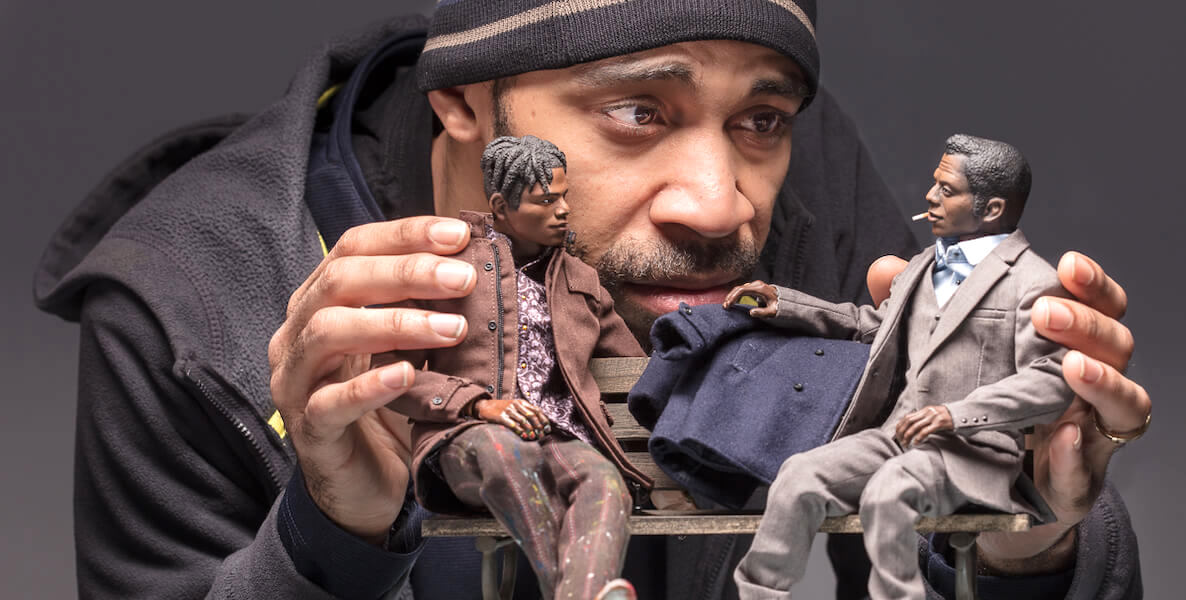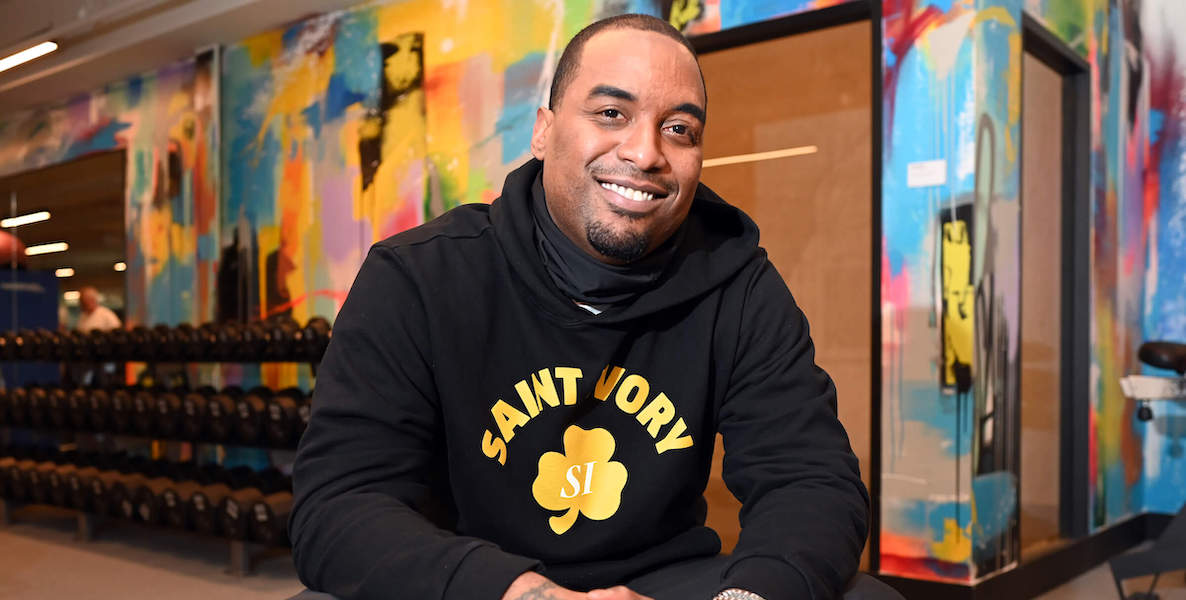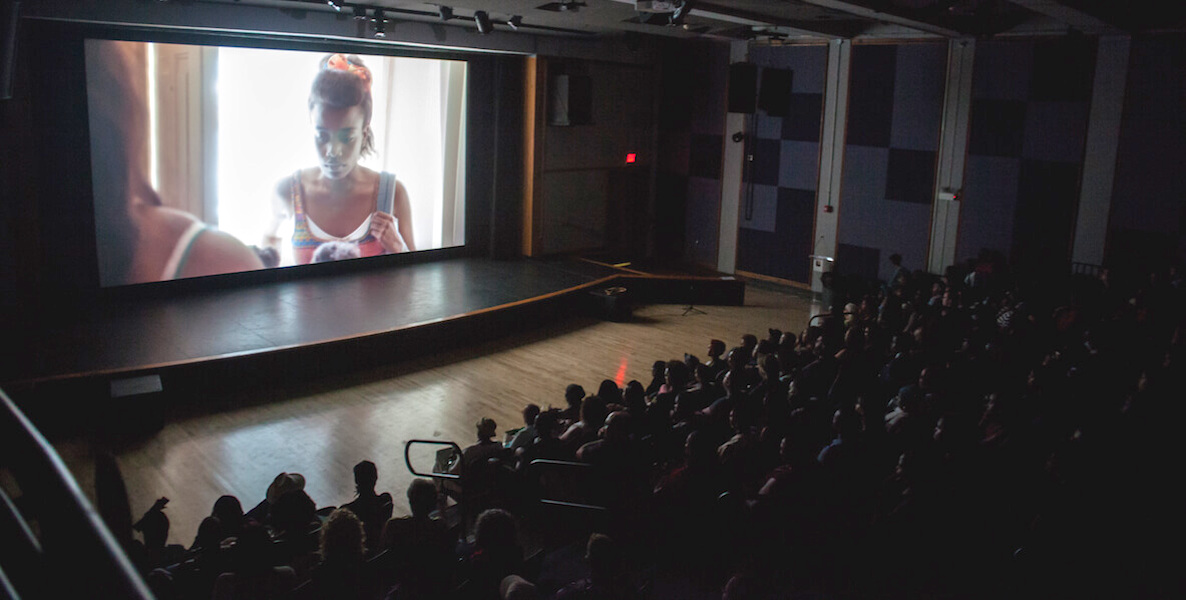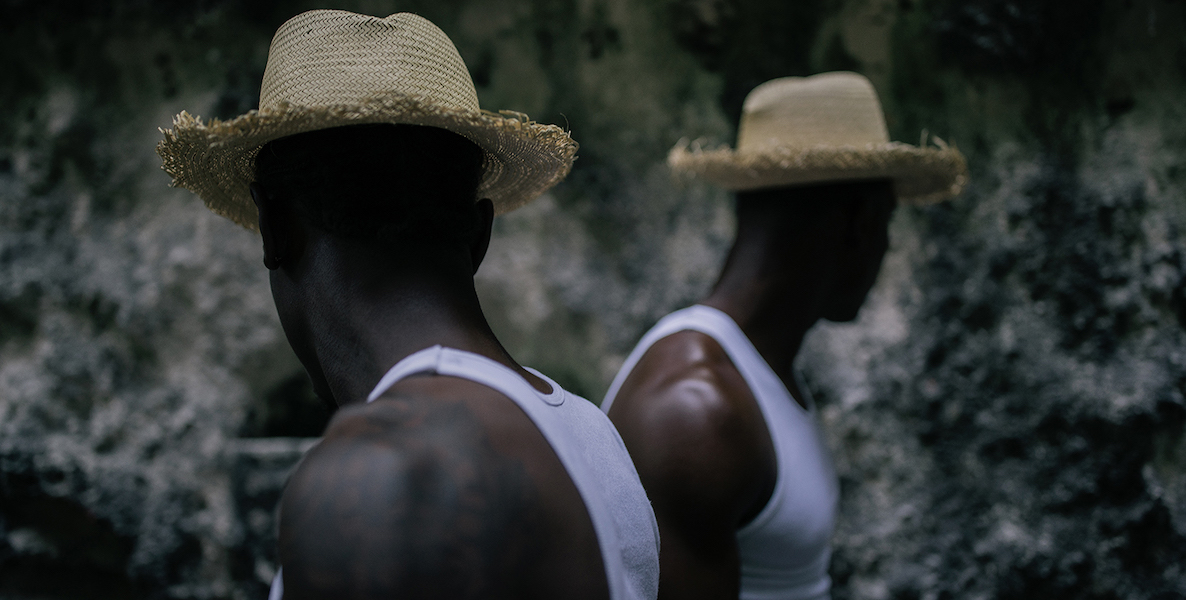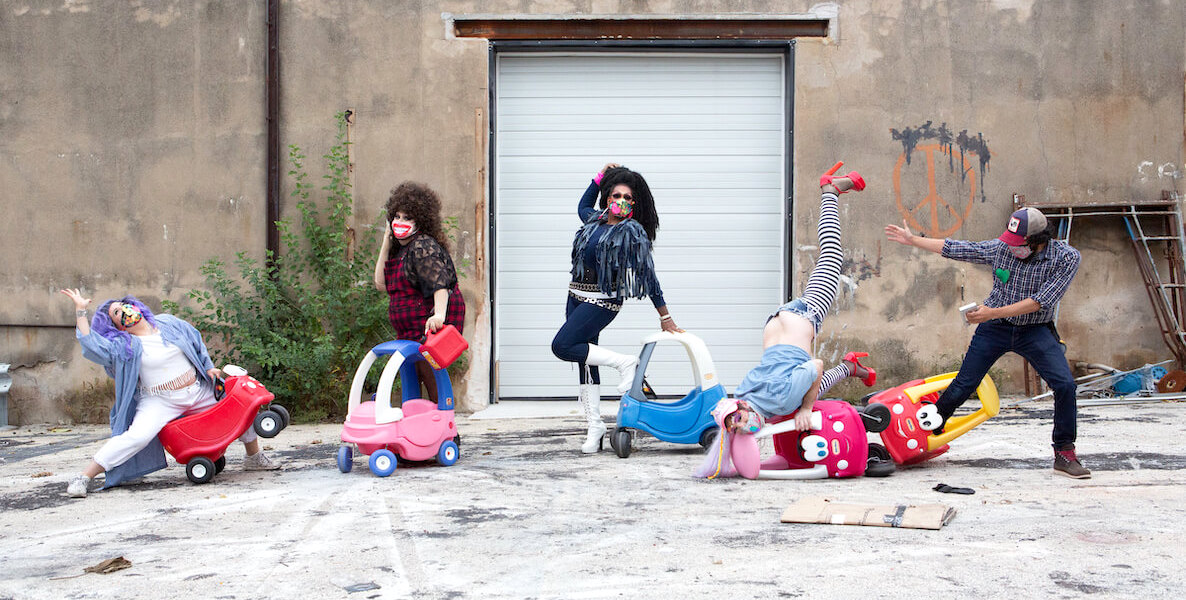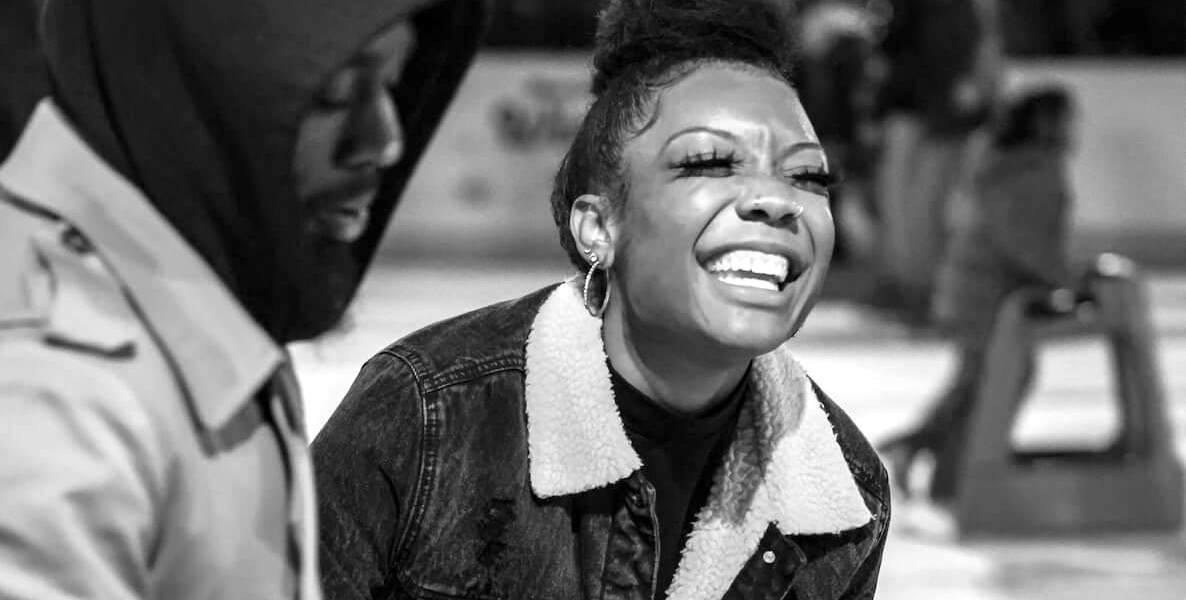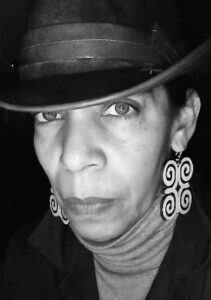
In “Celebration of Life,” a stunning photograph created by Andrea “Philly” Walls and curated for The Museum of Black Joy, Ramona Africa sits comfortably in a chair with her right fist raised and a subtle, knowing smile on her face. The photo feels vintage in black and white, and it is framed by images of Ramona’s family (top and bottom); her raised right fist on the viewer’s left and a small fire alarm with the word—“fire” in white on the viewer’s right. The Philadelphia fire that Ramona Africa survived is one reason why her smile knows so much in the photo.
“That’s Ramona Africa,” Walls tells me as she explains the impact that the MOVE bombing has had on her intentionality as an artist. For Walls, the bombing hit close to home, literally. Having grown up in a tight-knit all Black West Philadelphia community in the 80s, Walls used her art to wrestle with the silences around the tragic bombing of a Black residential neighborhood. “I understand now why people in the community never wanted to talk about it; why people in Philadelphia never wanted to talk about it. Or if they did, it got broken out into camps along the lines of freedom fighter or cop killer. There was no nuance in between. There was just that much rancor. And if you’re from Philly, you know.”
“I’m just trying to problem-solve, and I have a camera,” Walls says. “I need to tell this other story and have equal time in the public domain because the people who make decisions about Black and Brown bodies have no intimacy with the fact that we are not 24/7 being actively traumatized.”
Walls is from Philadelphia. She knows. Born in the Cobbs Creek enclave of West Philadelphia, Walls went to Bryant Elementary School and was then (voluntarily) bussed to Lamberton. She graduated from Overbrook High School. But she was never formally trained as an artist.
“You know what my training is?” she asks me. “I’m an eavesdropper.”
Walls is a self-professed introvert who would spend hours on her stoop just watching the inner workings of her West Philly neighborhood. Cobbs Creek was all Black but had the kind of class diversity amongst those Black folks that could only exist because of redlining. Black doctors, dentists and other professionals lived in her community. There were gang wars too. The Moon gang and the 59th Street gang were battling over what little turf existed in the hood. Walls has vivid memories of a complicated neighborhood within which she felt safe and vigilant about observing the ways of the people and families all around her.
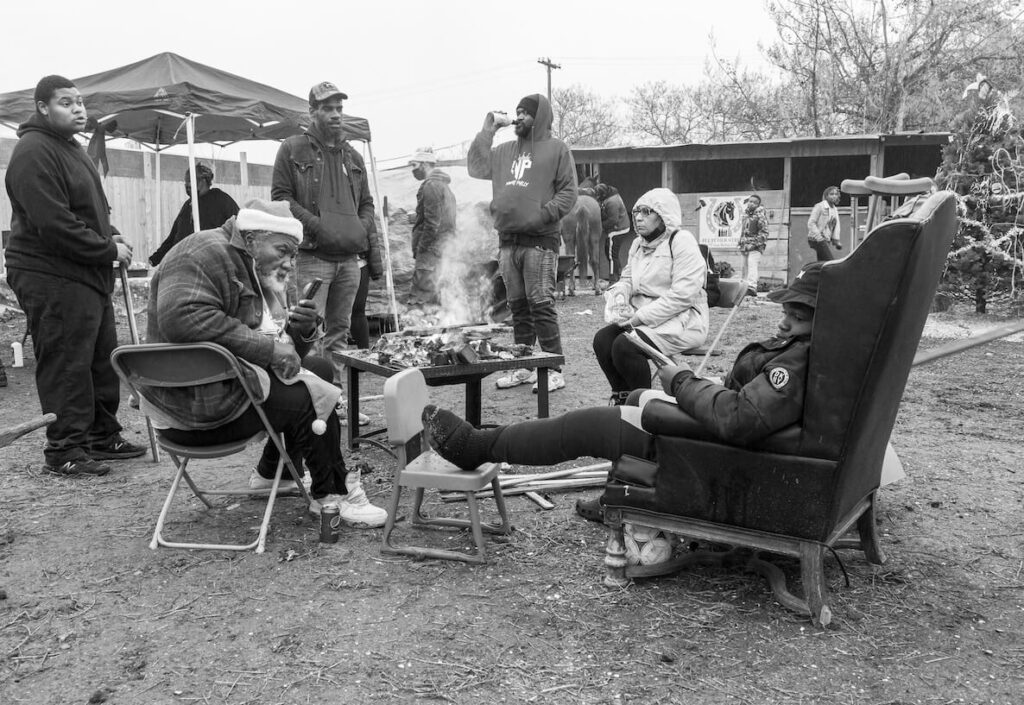
“It was dangerous if you stepped outside of your little eight-block radius, but that eight-block radius was pure heaven,” she says.
She began her artistic practice as a poet in the 10th grade, not long after the legendary Sonia Sanchez read from her work in the Overbrook High School library. “I was cutting class, and just so happened to be in the library while she was in there,” Walls recalls. “Listening to her speak just changed everything.”
After Sanchez inspired her awakening as an artist, Walls became aware of the giants amongst her right here in Philadelphia. She graduated from Overbrook in 1981. “When I came out, [spoken word artist] Ntozake Shange was here. [Writer] Toni Cade Bambara was here. Sonia Sanchez was here. [Poet] Amiri Baraka came down regularly. Lamont Steptoe was the poetry curator at the Painted Bride Art Center, so he always had people (coming in). [Poet] Gwen Brooks would come in, and Major Jackson followed him (Steptoe) at the Painted Bride,” she says.
These days, Walls is a poet, photographer, curator and creator. She is the founder of the Museum of Black Joy, a digital museum that started through her blog and her photographic work in Philadelphia. She is currently hosting symposiums on the subject and the indelible impact of that photography on what Black joy can mean through a visually rigorous study of Philadelphia life.
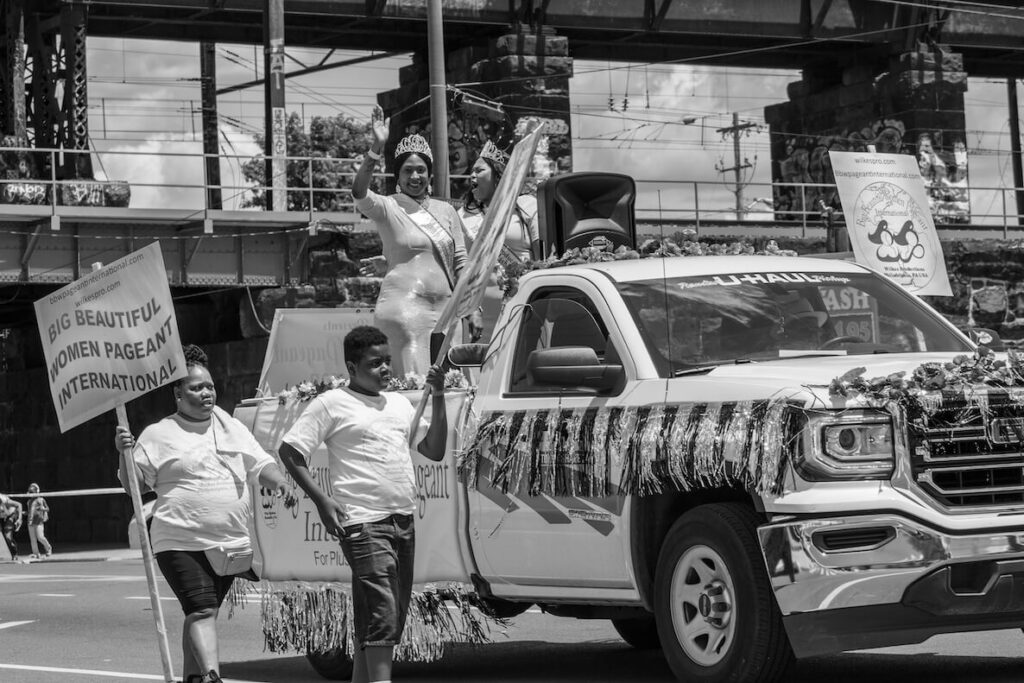
People holding hands in New River Presbyterian Church; couples skating at River Rink; a shot of a young student in the stacks at Lucien Blackwell library; or capturing a little girl doing a hand stand in the midst of a flip—these everyday images reflect the kind of joy that warrants a personal engagement with what joy can mean in these contexts and beyond. For Walls, Black joy is quotidian.
“The joy thing for me is always there,” says Walls. “I see it every day. The Museum of Black Joy started as a personal project to turn my lens in a way that combats the 24/7 narrative of global doom attached to all people of color.”
Even writing about joy feels counterintuitive these days. Joy often presents itself as an exceptional counter-narrative to the mad mundane day-to-day of our existence. It is usually positioned as something extraordinary—a feeling that doesn’t happen often. In some sense, our understanding of joy is inextricably linked to its binary opposite, whatever that is on any given day: pain, sorrow, loss, grief . . .
This is one reason why the photographs in Walls’ digital installation serve as a powerful reminder of the accessibility of Black joy. It is at our fingertips and embedded in the things that we do and can do each and every day. Black joy is not exceptional.
For some time now, Black joy has enjoyed a particular place in the semantic temple of happiness. Like Philly Walls’ collection in the Museum of Black Joy, it can serve as a special form of resistance to the destructive forces of white supremacy. Or not. Black joy can fight the power by not fighting at all. It is a call to celebrate, to grapple with a granular sense of hope and triumph over evil; it is an impetus for self-care with the knowledge that caring for one’s self is, in fact, the best way to fight the powerful forces aligned against Black people. In this sense, Black joy is a form of resistance.
The currency of Black joy almost always re-emerges around Black History Month. Given the reductive approaches to centralizing Black pain and/or the pathology of white racism during the shortest month of the calendar year, the calls for Black joy and the impulse to center something else in the experiences of Black people is palpable every February. And this month is no different. Merriam-Webster defines joy in two ways: 1) “a feeling of great happiness,” and 2) “a source or cause of great happiness.”
Black joy generally follows the latter definition of the term: Black joy is a source, and in some instances, a cause of great happiness.
“The joy thing for me is always there,” says Walls. “I see it every day.”
Given the state of the world and the context of our current cultural wars, many people have made the argument that Black joy is a form of resistance. According to Rev. Jered Weber-Johnson, “The concept is simple, celebrating life and enjoying life’s simple pleasures, to express joy for living in a world bent on erasing your life, is a radical act of resistance.” Or Mei-Ling Malone who says that: “the whole idea of oppression is to keep people down. So, when people continue to shine and live fully, it is resistance in the context of our white supremacist world.”
The publishing world is also hip to this way of thinking on the concept. Black joy books for all ages—children especially—are their own cottage industry within the predominantly White publishing world. Or consider Professor Leah Rigueur’s thoughtful reflections on “The Persistent Joy of Black Mothers,” where she chronicles the ways in which Black mothers have resisted the strictures of stereotypes and abject racial hatred to grasp the experience of motherhood in the face of mortality and dominate white models of maternity.
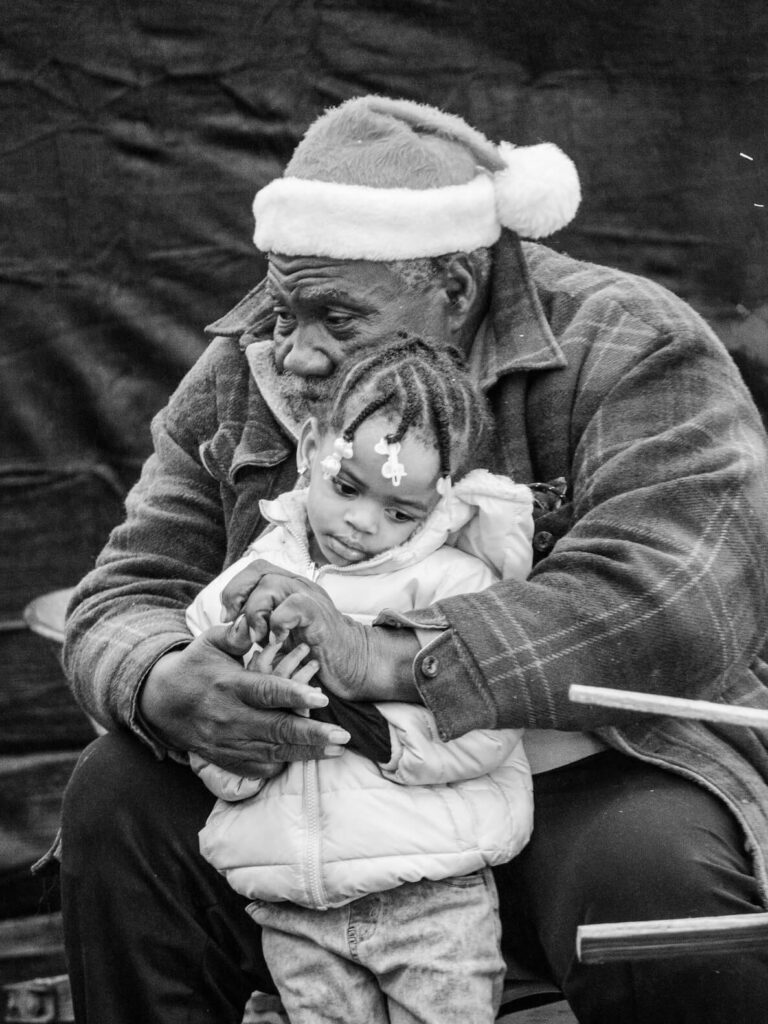
Through Walls’ photography, an appreciation of the resistance frame is possible, but for her, that cannot be the exclusive understanding of Black joy. “I don’t have the energy to get out there and protest with a sign, and I don’t really believe in that as a model anymore,” she says. “You have to get a permit to have a protest. I’ve seen so many cycles of this generation after generation of protesting and then falling back and then the backlash. I’m just trying to problem-solve, and I have a camera. I need to tell this other story and have equal time in the public domain because the people who make decisions aboutBlack and Brown bodies have no intimacy with the fact that we are not 24/7 being actively traumatized.”
Walls recounts a night at dinner with family. They say grace before they break bread and something strikes the artist. “Before we eat every day since I could speak, we say grace before we eat. It’s 30 seconds of grace three times a day, and in that moment, I was like this is what we do. This is who we are. We’re grateful even if the only thing on the plate is toast. We take a moment to be grateful and this is who we are.” She wondered to herself in that moment why such a profound image of gratitude was not a part of the popular conversation about Black life. This is what Walls thinks about when she envisions Black joy.
Walls’ stunning Eastern State Penitentiary installation—Memes of Consciousness: Where Beauty Intervenes—was one of the most unique artistic experiences that one could have in the city of Philadelphia last year. She was commissioned by Mural Arts Philadelphia and ESP to do the work.
It was a cool evening in September when I experienced it. After scanning a QR code I was able to access the soundtrack and narrative for the cinematic imagery projected on the exterior wall of the ESP. It’s a giant installation, but the sounds and the narratives of activists, and those who are incarcerated grounds the work in some solemn ways. The overall effect of the work is to humanize the people that are discarded in the criminal justice system. “Memes of Consciousness” is a powerful multimedia work of art that resists the easy invisibility of the millions of people in jails and/or prisons.
For Walls, this is the kind of work that she was built to create. At the bottom of the landing page for the Museum of Black Joy website, Walls quotes the bible, Psalms 30:5: “Weeping may tarry for the night, but joy comes in the morning.”
It’s a powerful coda to a photographic reverie on Black life set in Philly, that presents as if it could be almost anywhere in Black America. That’s how pervasive Black joy has to be for Philly Walls. There will be many weeping nights, but each and every one presents its own unique possibility for Black joy in the morning.
![]()
RELATED FROM JAMES PETERSON
Header photo shows a couple at Blue Cross River Rink Winterfest in 2022 | All photos by Andrea Walls



